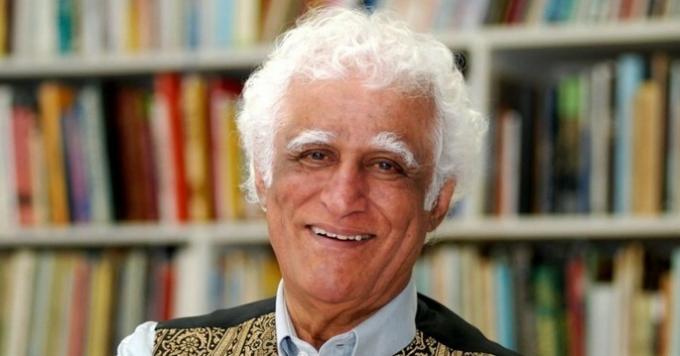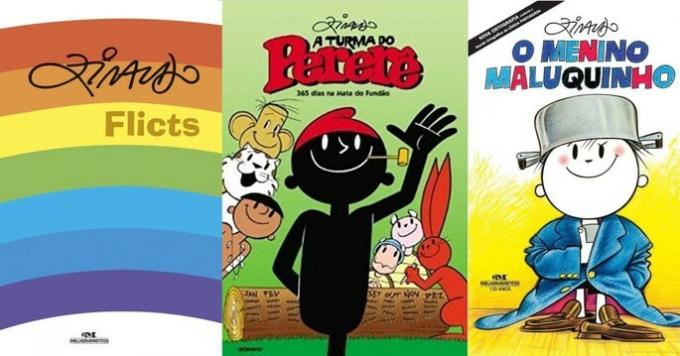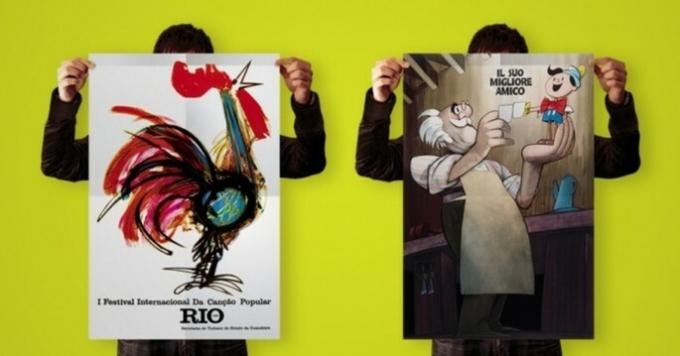Born in Caratinga, Minas Gerais, on October 24, 1932, Ziraldo Alves Pinto lived in his hometown throughout his childhood.
His name comes from the junction of part of his mother's name with part of his father's name: Zizinha + Geraldo = Ziraldo.
Around the age of 17, the author went with his grandmother to Rio de Janeiro. However, he ended up returning to Caratinga the following year, finishing high school there.
He had two marriages: in 1958, Ziraldo married Vilma Gontijo, who became the mother of his three children (Daniela, Fabrízia and Antônio). The couple stayed together until the year 2000. In 2002, the author married Márcia Martins.

Over the years and as he grew older, Ziraldo began to show some health problems.
In 2013, aged 80, he suffered a mild heart attack and in 2018, at 85, he suffered a stroke. This, more serious, meant that the artist remained hospitalized at the CTI for a month.
Ziraldo's career
The career alone says a lot about who Ziraldo was.
As a child, the artist already showed that he had the talent and gift of drawing. At age 6, he had one of his drawings published in the Folha de Minas newspaper.
Ziraldo is a caricaturist, cartoonist, cartoonist, columnist, chronicler, draughtsman, playwright, writer, humorist, journalist and painter.
In 1954, at the tender age of 22, Ziraldo began working at the newspaper morning sheet (currently Folha de São Paulo).
Three years later, the artist went to work at the magazine the cruise. The publication had a lot of notoriety at the time and, as a result, Ziraldo's work gained popularity.
It was also in the same year that Ziraldo completed his higher education, obtaining a degree in the area of Law.
In 1960, he achieved a milestone in Brazilian history as a graphic artist: he launched the first colored comics written by a single author. This is the magazine Pererê's class.
Despite its huge success at the time, the magazine was cancelled. The military regime that took place in Brazil in 1964 considered it too subversive.
Years later, the magazine was relaunched, but the success was not the same.
During the dictatorship period in Brazil, Ziraldo proved to be a great resistance to oppression.
Along with some prominent names in the Brazilian art scene, such as the Jaguar cartoonists, Millôr Fernandes and Henfil, in addition to journalists Tarso de Castro and Sérgio Cabral, Ziraldo participated in the newspaper The Quibbler.
Pasquim was an alternative seminar that played an important role in opposing the military regime, and became a kind of spokesperson for the indignation of the Brazilian population.
Because of his position, Ziraldo was arrested at his home and taken to Fort Copacabana, Rio de Janeiro, as he was considered dangerous at the time.
Throughout his career, Ziraldo had numerous successful publications. The most emblematic of all, without a doubt, was launched in 1980: Crazy little boy.
To better understand the oppressions suffered by Brazilian citizens during the military regime, be sure to read the text Military Dictatorship in Brazil: causes, summary and end.
Awards received by Ziraldo
Thanks to the importance of his work for literature, Ziraldo was awarded some awards throughout his career. Among them, the following stand out:
- "Nobel" International of Humor: received at the 32nd International Salon of Caricatures in Brussels, 1960.
- Merghantealler Award: main free press award in Latin America, received in 1960.
- Jabuti Literature Award: the prize was awarded for his book "O Menino Maluquinho" and was received in 1980.
- Medal of Honor of the Federal University of Minas Gerais: received in 2016.
Main works by Ziraldo
The great diversity of art produced by Ziraldo includes posters, books, cartoons, brands and logos, among others.
Ziraldo's Books

Check out some of Ziraldo's main books.
- The gang of Pererê (1960)
- Flicts (1969)
- The Lilac Planet (1979)
- The crazy boy (1980)
- Apple bug (1982)
- The Ten Friends (1983)
- The juvenile knee (1983)
- The Fable of the Three Colors (1985)
- The brown boy (1986)
- Vito Grandam (1987)
- A very crazy teacher (1994)
- Grandma Delight (1997)
- The Moon Boy (2006)
- A girl named Juliet (2009)
- Girls (2019)
Other works by Ziraldo
See below for examples of some types of work by Ziraldo that go far beyond literature.
Poster

Cartoon

comics

Characters created by Ziraldo

Ziraldo's stories take place in a variety of contexts ranging from politics to the children's universe.
Because of this, there is a great diversity of figures represented in the artist's work, which presents an extensive work.
Learn a little more about Ziraldo's main characters.
Crazy boy
From the work “O Menino Maluquinho”, the character is a very cheerful, mischievous and creative 10-year-old boy, known for his antics and considered a troublemaker.
Her trademark is the pot she wears on her head like a hat.
As Ziraldo's most famous character, Menino Maluquinho gave rise to a movie.
Juliet
She is a determined, perky and smart girl, who dates the Crazy Boy. Known for being a gossip, she tends to lead all the games she participates in.
The girl's trademark is her red blouse with the lightning design.
The character is part of the book “O Menino Maluquinho”, and also has her own work: “The Adventures of Julieta”.
Super Mom
From the work “The Supermother”, the character emerged in the universe of comic books and portrays the behavior of zealous, exaggerated and, at times, melodramatic mothers.
The term “Supermother” is how the author refers to the character Dona Clotildes, whose relationship with her son Carlinhos is told in the work.
Dona Clotildes was inspired by the author's mother, Dona Zizinha.
junior
From the work “The Juvenal Knee”, the character is the knee of a very naughty child. Despite being bruised, grated and skinned, Juvenal was a very happy knee.
apple bug
He is the narrator of a collection of children's books of the same name, who often tells and invents stories and anecdotes.
Zelen
Known as “Menino da Lua” (name of the work in which he is the main character), he is the smallest of the children in the story and is characterized by a face full of holes.
Despite being a charming child, the character was quite alone and all his games were lonely.
As the story unfolded, she managed to join a group of friends whose names were inspired by the planets.
This is the case, for example, of Veve (character that wears a star-shaped sex block), inspired by the planet Venus, and the green boy martin, inspired by the planet Mars.
crazy teacher
Teacher who presents new ways of transmitting knowledge to students, exploring, mainly, playfulness and creativity. The crazy teacher had a film adaptation.
To learn more about topics related to this content, be sure to read the texts below.
- Chronicle: characteristics, types and example
- Anecdote textual genre: characteristics, types and example
- Mauricio de Sousa: biography and characters



